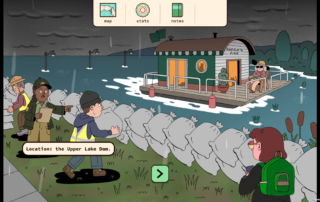Darcy Hess admits she and her husband have strange viewing habits, “Gary and I don’t like watch reality television, we watch caterpillars.”
Their home outside Beloit has several large containers filled with caterpillars in various stages of development. Some come into the house as a tiny white egg on a leaf, others already hatched. In turn, each will grow and eventually turn into a Monarch Butterfly.
“They are just the sweetest little creatures,” says Darcy. “I don’t know, it’s something about it that’s so exciting and beautiful.”
If the inside of their home is the birthing suite, the outside is the playground. The whole area is natural and the 20 acres surrounding their home is filled with native grasses and flowers, including plenty of milkweed. Gary Hess freezes, “Monarch. Right there.” As he says it, Gary Hess points to a fluttery insect. They watch to see if the Monarch will lay an egg they can collect. But they don’t raise butterflies as a science experiment.
“We cross our fingers, we hope that what we’re doing is having some affect,’ says Gary. “Five-six years ago. We could just walk along the edge of the driveway, we’d count 15, 20 caterpillars. I could’ve taken a coffee can and just plop them in there like I’m picking berries, but not anymore. In the last few decades here, most of the common milk weed in this country was existing out in the margins of the farmer’s fields. Now all of a sudden with the ground all ready with crops, they can come in there and spray everything with round up and of course round up kills milk weed.”
Milkweed is the only plant on which a Monarch will lay eggs. Gary and Darcy Hess are part of the Monarch Watch program. Their home is a way station on the insect’s winter migration path to Mexico. “For the monarch watch, way station program, all you have to have is ten milk weed plants of two different species and four species of nectar bearing plants. We basically said that we’re going to maintain a habitat that’s friendly to the butterflies and, and the caterpillars.”










